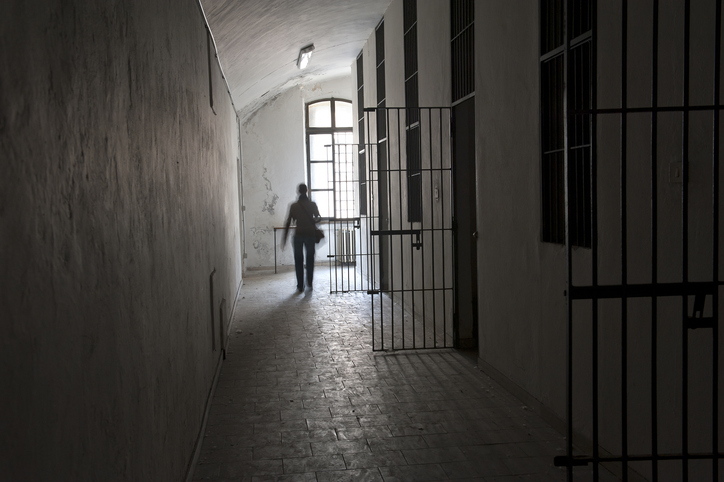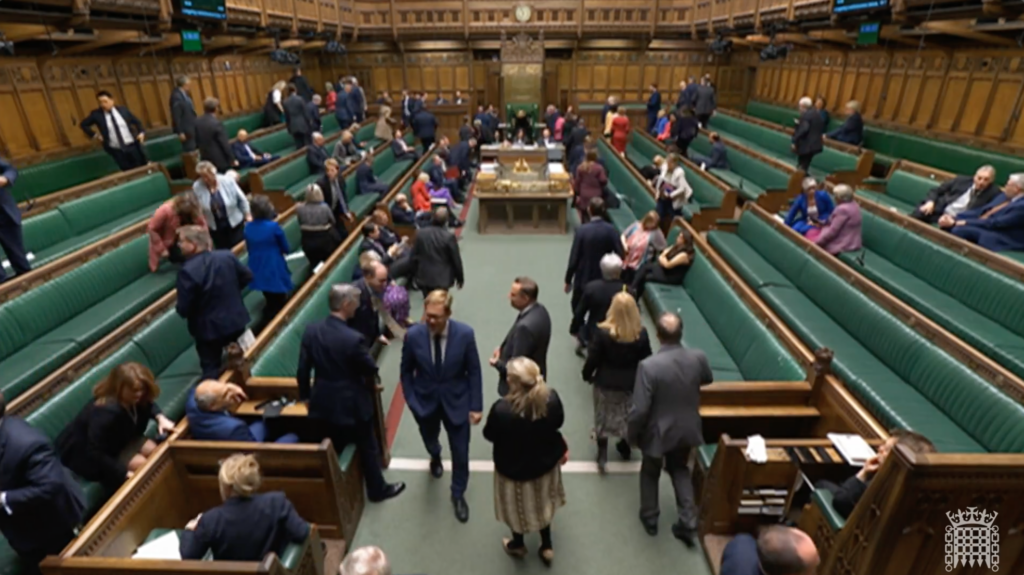What is prison rehabilitation?
Despite its barbaric origins in the medieval dungeon and torture chamber, since the late 18th century prisons have combined elements of punishment with elements of rehabilitation.
As the French philosopher Michel Foucault put it, punishment shifted over time from the disciplining of the body to the disciplining of the “soul”.
The rehabilitation of offenders is a key feature of the modern UK criminal justice system, and work to rehabilitate prisoners goes on, in varying degrees, in every prison.
While in the past, offender rehabilitation may have been directed at ‘reforming the character’ of prisoners, its focus is now on preventing reoffending.


Prisons adopt a range of measures to reduce reoffending. These include direct therapeutic interventions to address the psychological causes of criminal behaviour, as well as services to prepare offenders to successfully reintegrate into the community after release. Those services include the provision of academic programmes, vocational courses and employment opportunities.
Background
In 1779 the British Government passed the Penitentiary Act, which made the rehabilitation of criminals a function of all prisons. Since then, while imprisonment has remained the central form of punishment in the criminal justice system, the emphasis on correction rather than punishment of an inmate has steadily increased.
Rehabilitation techniques vary according to the nature of the offender, the type of offence committed, and the institution in question.
Techniques vary from educational and vocational training to help the offender learn a skill for use outside the prison, to psychological rehabilitation, dealing with various problems the individual offender may experience. Drug-addicted prisoners can also receive treatment for their condition in some UK prisons.
Rehabilitation takes place both inside prison, and in some cases, once an offender has been released, on Resettlement Programmes. Help continues to be provided in these circumstances by the Probation Service and other agencies, either as a condition of their early release, or to ease the transition into the community.
Controversies
Despite the entrenchment of rehabilitation in social and criminal justice policy, the idea that prisons are not intended to rehabilitate but rather solely to punish and protect the public retains considerable public support in some areas. Improved conditions and opportunities for rehabilitative activity in prisons generate the complaints that modern life behind bars is soft and too much like a ‘holiday camp’.
Public resentment is also fired by weaknesses in the provision of similar services in the community. Drug rehabilitation, for example, is widely believed to be more easily accessible in prison than outside.
Nonetheless, there has been much criticism about the level of rehabilitation that actually occurs in the UK’s prisons, mainly due to a lack of funding for these programmes and prison overcrowding, which hampers effective delivery of many schemes.
The success that prisons achieve is hampered further by many prisoners lacking basic skills or suffering from social and psychological problems. Thousands of prisoners are released every year without anywhere to live, worsening problems of homelessness. Almost three-quarters of those in prison have mental health problems and almost two-thirds have drug problems.
Whatever rehabilitation takes place inside prison, many former inmates experience considerable difficulty reintegrating into society because of the attitudes of others. The Rehabilitation of Offenders Act 1974 deals with the disclosure of criminal convictions and allows, in certain circumstances and after a period of time, many past convictions to be regarded as ‘spent’ and they therefore do not need to be declared. However, the stigma of imprisonment, and long absences from work on CVs, has a tendency to put employers off hiring former prisoners – exacerbating social exclusion, and increasing the risk of a return to crime.
In December 2010, Justice Secretary Ken Clarke published a green paper on sentencing and rehabilitation which set out plans to “break the destructive cycle of crime and prison” by ensuring that prisons become “places of hard work”, the priority being to reduce re-offending.
The proposed radical reforms included introducing regular working hours in prison, new measures to force criminals to make amends to victims and communities for the harm they have caused, and most controversially, introducing a ‘payment-by-results’ scheme with private providers being rewarded for reducing re-offending.
Consultations on the green paper – ‘Breaking the cycle: effective punishment, rehabilitation and sentencing of offenders’ – continued until March and the Government published its response in June 2011. Justice Secretary Ken Clarke said he believed the responses to the consultation “have helped us to set a more intelligent course for delivering effective punishment and reducing reoffending in England and Wales.”
In a speech to the Centre for Social Justice in October 2012, Prime Minister David Cameron said his Government was engaged in “what can only be described as a rehabilitation revolution”– led by the new Justice Secretary Chris Grayling, whose main mission was “to see more people properly punished, but fewer offenders returning to the system.”
The Prime Minister called on charities, companies and voluntary organisations to help offenders reform by providing drugs treatment, education and skills training. “Do whatever it takes to get these people back living decent, productive lives,” he said. “We will pay you for that; but – and it is a major but – once again the payments will depend on results.”
Mr Cameron added that by the end of 2015, he wanted to see payment by results “spread right across rehabilitation.” Whilst he acknowledged there would be some high-risk offenders for whom it would not be appropriate, he insisted this approach “should be the norm rather than the exception.”
Responding to the speech, the Rehabilitation for Addicted Prisoners Trust (RAPt), which provides drug and alcohol addiction treatment programmes in prisons, called on the Prime Minister to increase investment in their treatment programmes so that they could be offered to all addicted offenders.
According to RAPt, analysis of police data had shown that less than one third (31%) of substance misusing prisoners who completed a RAPt programme while in prison had reoffended within 12 months of release, compared with a predicted re-offending rate of over 70%; however, fewer than 3% of prisoners identified with a drug problem currently had access to the programmes.
St Giles Trust, the charity that helps offenders to break their cycle of offending, welcomed the Prime Minister’s commitment to a “rehabilitation revolution”, in particular the use of ex-offenders to help others move away from a life of crime.
“Well trained, carefully selected ex-offenders with direct experience of the issues their clients face can offer a highly credible, trusted service to the most disengaged individuals,” the charity stated. “They are also inspiring role models and living proof that change is possible.”
In May 2016, the Ministry of Justice published Unlocking Potential: A Review of Education in Prisons. The review called for improvements to the provision of education in prison and the monitoring of that provision. In November 2016, the Ministry of Justice published a white paper, Prison Safety and Reform, that committed to the development of new measures for tracking how a prisoner’s rehabilitation progressed during the course of their prison sentence.
Government critics on the other hand have pointed out that government spending on prisons was £3.4 billion in 2018/19, which was a 10% reduction in real terms compared to 2009/10. The government note that the bulk of these cuts were though in the period 2010 to 2015, with spending increasing 11% after 2015. It is also pointed out that the overall prison population has declined by a comparable level to spending over the same period. It is though argued that reductions in expenditure mean that prisoners have less access to rehabilitative activity. Similarly Prison Inspection reports are said to suggest that prisoners are spending longer in their cells, with fewer opportunities to take part in ‘purposeful activity’.
Statistics
The adult reoffending rate for the October to December 2018 cohort was 27.5% which is a 0.6 percentage point decrease from the same quarter in 2017; this is the lowest reoffending rate in the
twelve-year timeseries which has fluctuated between 27.5% and 30.6%. Almost 101,000 provenff reoffences were committed over the one-year follow-up period by around 25,000 of adults. Those that reoffended committed on average 3.97 reoffences. [Source – Home Office – Proven reoffending statistics for England and Wales, published October 2020].
On release, three fifths of prisoners have no “identified employment or education or training outcome. [Source Ministry of Justice – 2016]
In a Ministry of Justice survey, 5 percent of prisoners reported attending an anger management programme, 7 percent a thinking skills or other cognitive behavioural programme, and 27 percent
some form of support for addiction, though 40 percent reported needing such support. [Source – Ministry of Justice, 2014].
Quotes
“When this Government came to power we were spending £40,000 a year (per person) just on banging people up. With payment by results, your money goes into what works: prisoners going straight, crime coming down, our country getting safer. It’s such a good idea I want to put rocket boosters under it….” – Prime Minister David Cameron in a speech to the Centre for Social Justice – October 2012





























